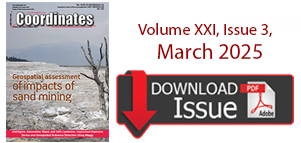| Galileo Update | |
GALILEO UPDATE
One Galileo back on track
A European Space Agency (ESA) Galileo satellite that had slipped into an erroneous orbit soon after deployment last August is reportedly back on its feet, so to speak. The unmanned craft sent its first navigation signal in space on Saturday 29 November 2014 after reaching a new target orbit.
A European Space Agency (ESA) Galileo satellite that had slipped into an erroneous orbit soon after deployment last August is reportedly back on its feet, so to speak. The unmanned craft sent its first navigation signal in space on Saturday 29 November 2014 after reaching a new target orbit.
This is the fifth of six satellites to start contributing to the ESA’s Galileo global positioning (GPS) network. However the sixth satellite remains unaligned and incapable of inter-satellite communication.
The repositioning commands were a success thanks to the collaborative efforts of the German and French space agencies, and were uploaded to the satellite via an extended network of Galileo ground stations.
Still, it should be noted that this wasn’t a perfect recovery. As opposed to the ideal obit that the other four satellites are in, the fifth Galileo will now fly over the same ground location every 20 days. This compares to a normal Galileo repeat pattern of every 10 days. Now we wait for the ESA to attempt to recover their sixth. www.natureworldnews.com
ESA receives 10th Galileo satellite
The European Space Agency (ESA) received the Flight Model 6 (FM06) Galileo navigation satellite at the European Space Research and Technology Center (ESTEC) in the Netherlands. The satellite brings to four the number currently at ESTEC as ESA prepares for future launches.
There are currently six Galileo satellites in orbit. ESA launched the satellites two at a time in 2011, 2012 and 2014. The most recent Arianespace Soyuz launch delivered the latest two satellites into the wrong orbit due to a malfunctioning upper stage, however ESA was able to raise the fifth satellite’s orbit to allow checking of its navigation payload.
ESTEC officials have completed the acceptance testing for FM03 and FM04, and recently completed FM05’s thermal vacuum trial. FM05 will proceed through radiofrequency testing after Christmas. The latest arrival, FM06, will undergo thermal vacuum testing in January.
OHB in Germany is building 22 Full Operational Capability (FOC) satellites with navigation payloads from SSTL in the United Kingdom. ESA and the European Commission are currently planning the launch schedule for Galileo. www.satellitetoday.com











 (No Ratings Yet)
(No Ratings Yet)






Leave your response!